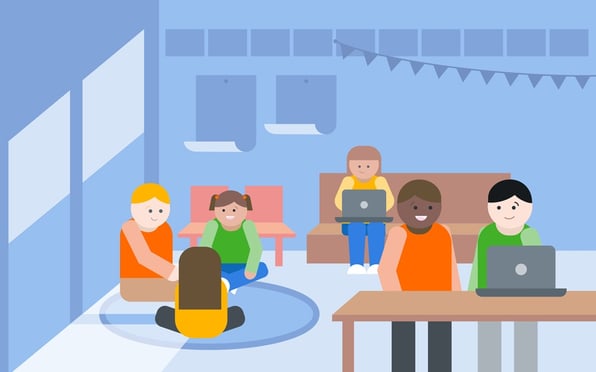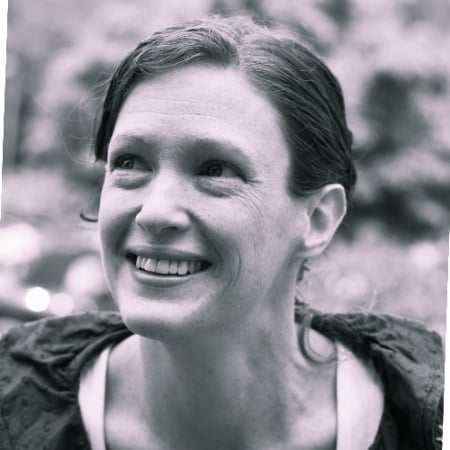
Personalized, Blended Learning: How to Make It Work
5 tips to jump-start personalized learning in a blended environment

When friends and fellow parents come over to my apartment, they often remark on how quiet it is. I usually say something about having a “low threshold for chaos,” and jokes inevitably ensue about the noise that seems to come naturally with the arrival of children. What’s funny is that one of the first and most formative milestones in my career path was a position as a high school teacher, teaching students with learning differences – a large portion of whom displayed some combination of low attention and high energy.
In that job, I turned what felt like daily cartwheels to plan lessons that would engage an entire, antsy group; to develop stations; set up learning games; schedule discussions, debates, and interactions; include movement activities and energy-burners and mood-shifters; support integrated and personalized remediation; address and value a variety of learning styles and credit non-traditional proof-of-learning; and so on… all in service of learning, yes, but also, perhaps, of a certain avoidance of chaos and noise. It was high-energy, constant-motion work, not unlike juggling or plate-spinning, and it was exhausting, but I loved it.
One day, I finished a conversation with a student, looked up to move on to whatever needed me next, and found… that nothing needed me next. There was a group of students sitting on the floor playing probability games with dice; there was a pair of students doing interactive problems on the single computer we had at the back of the classroom; several students were working independently on problems at a table; another student was consulting with my assistant… I just stopped, backed up against the wall, and watched. After a minute, I went next door and grabbed a veteran co-teacher by the wrist and tugged him to the threshold of my classroom, where I whispered, “Look. They’re doing it. Can you believe it? They’re just… learning.” He crossed his arms and leaned against the wall next to me and said, “Yup. Now listen. That’s my favorite sound.”
Learning can be beautifully noisy – we all know that – and it can be silent, too. But this sound – this low, industrious hum, punctuated by laughs and "Ohhh’s" and "No, it’s four. Wait, five? Let’s try it" – well, it’s my favorite sound now, too.
I didn’t know the terms personalized learning or blended learning at the time but it’s clear to me now that one of the keys to “making it work” is knowing the difference between the buzz of chaos and the industrious hum of learning, and not being afraid of a classroom where everyone isn’t sitting quietly and/or all doing the same thing.
And no – the beautiful hum didn’t last all class and no, it didn’t happen every day – but at that moment, my students were all learning, and here’s the magic: they weren’t learning from me. They were learning by interacting with the material, with one another, and with their own thinking. I was just there to build the little world of our classroom, and then start it spinning.
Tips to Make Personalized, Blended Learning Work
1. Put Your Learning Environment to Work
Adjust your physical classroom spaces so they are more fluid and adaptable to blended learning experiences.
Adjust your conception of a “classroom” and a “lesson” to include combinations or variations of flipped classrooms, station rotations, lab rotation, flex, self-blend, and enriched lesson styles.
2. Put Technology to Work
Identify the best hardware and software options for your needs, and invest in training both teachers and students to be tech-literate. But don’t throw it at them all at once: Build teacher and student comfort with technology and new learning models gradually as you go.
Coach teachers on the appropriate “blending” of blended learning. Teachers should not feel burdened by technology as an “extra,” nor like study-hall monitors while computers babysit their students. Support teachers to work with classroom technology to best engage each student in their own learning goals.
3. Put Students to Work for Themselves
Make students aware of the new choices available to them, and the role their interests and motivations now play in the creation of their own learning paths.
Coach students to become more aware of the ways they learn, where their strengths lie, and where they have greater need for support. Some students may be more aware in these areas than others.
4. Put Students to Work for One Another
Reduce students’ reliance on teachers as the ultimate source of information and knowledge. Students and teachers alike should begin thinking of the classroom as a “laboratory for finding out.” Discussions, debates, and collaborations can be used to help students answer one another’s questions; get “un-stuck” on problems; challenge unsupported guesses; re-structure projects; etc.
Support teachers in making this shift by ensuring they have enough time and space to plan and facilitate project-based, multiple-session, and collaborative learning opportunities.
5. Put Teachers to Work as Learning Facilitators
Help teachers make the shift away from thinking of themselves as content providers who deliver lessons – and, instead, move them toward thinking of themselves as learning coaches and facilitators who are there to appropriately support, scaffold, encourage, challenge, and redirect, based on everything they know about their students’ individual needs, goals, and plans. Train teachers in best practices in differentiation, and using technology to help.
Give teachers plenty of time to work together to learn, plan, compare notes, and collaborate.
Continue Your Learning:

Molia Dumbleton began her career as a high school teacher at a school for students with unique learning profiles. Since then, she has developed support tools for educators and learners of all ages – from newborn to adult – in formal and informal settings. She is a writer, teacher, and editor who lives in Chicago.

